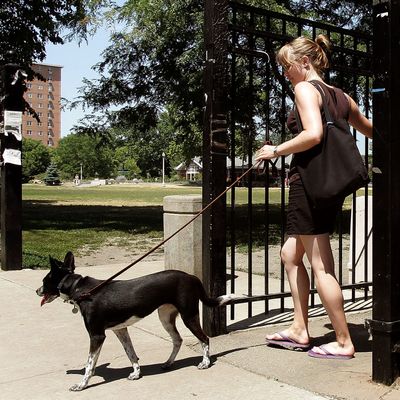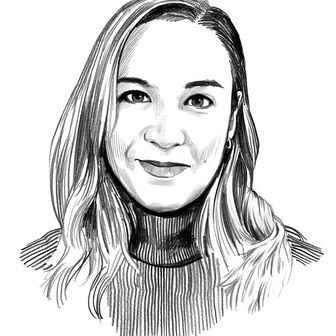
Chicago’s pending mega-development, Lincoln Yards, sounds like a dream come true for people who wish their college dormitories had come with indoor climbing walls. If you can afford a unit, you can someday avail yourself of a bespoke sledding hill and “recreation fields.” Your dog, too, will prosper. The puppy princelings of Lincoln Yard will enjoy a splash pool and something CityLab calls “a pug-mug video installation,” presumably for the benefit of their human Instagram followers.
Despite the developer’s assurances that Lincoln Yards is the product of a “progressive and inclusive” vision, the mixed-use development is controversial, as it benefits from tax breaks while the city continues to become less and less affordable for low-income people. This prospective canine utopia is in fact a symptom of widespread gentrification — which is not an uncommon trait for dog parks, especially in urban areas. Consider New York City’s infamous Tribeca Dog Run. Though the dog park has always been located on public property, affluent local residents took it over in 2008, and began charging dog owners $120 a year for use of the space, ostensibly for its upkeep. A 22-rule guidebook required members to chase non-members off the property, the New York Post claimed. In 2018, the city returned the dog park to public use, over the lamentations of its overlords.
In the case of the Tribeca Dog Run, a sharp class divide is immediately visible. All dogs may go to heaven, but not all dogs get to use a park that charges a fee for entry. Similarly, many neighborhoods don’t have access to dog parks at all. According to CityLab, there are only two dog parks located outside of the city’s wealthy North Side area; its lower-income neighborhoods are “dog park deserts.” The same Chicago neighborhoods that struggle for access to trauma centers and grocery stores also tend not to have safe places for people to exercise their dogs — and their residents are disproportionately more likely to be cited for leash law violations. Chicago’s dog park deserts are, as Axios observed in its write-up, an example of “stark inequality.” They’re also emblematic of other, national problems. North Side dogs don’t just have better lives in contrast with their canine peers on the South Side. Chances are good that they live better than many human beings, too.
Cities with higher median incomes and lower percentages of black and Latino residents tend to have better access to public parks overall, according to one study from 2018. Dog parks don’t have to be built in public parks, but lack of free, green space can indicate a lack of space for dogs and people alike. It’s a problem with concrete public policy solutions; cities could set aside funding for dog parks, for example, so residents are less reliant on fundraising efforts that are likelier to succeed in higher-income areas. But that wouldn’t entirely protect public space for either dogs or people from developers hungry for urban property. In Chicago’s South Side, developers competing for space may replace an existing dog park with their own, revamped version, which could create more problems than it would solve. “With private land, there comes more opportunities for the enactment of racism,” Anjulie Rao, editor of Chicago Architect, told CityLab. “People of color tend to be less welcome in private-public spaces like [private] plazas and dog parks on private property. They’re looked at with more scrutiny.”
Consider racist stereotypes about certain dog breeds, like pit bulls, and the risks for black and brown dog owners become especially clear. Pet ownership is an expense, but structural inequality makes it a luxury. Lincoln Yards’ dog park dreams aren’t for everyone — and increasingly, neither are cities themselves.






























